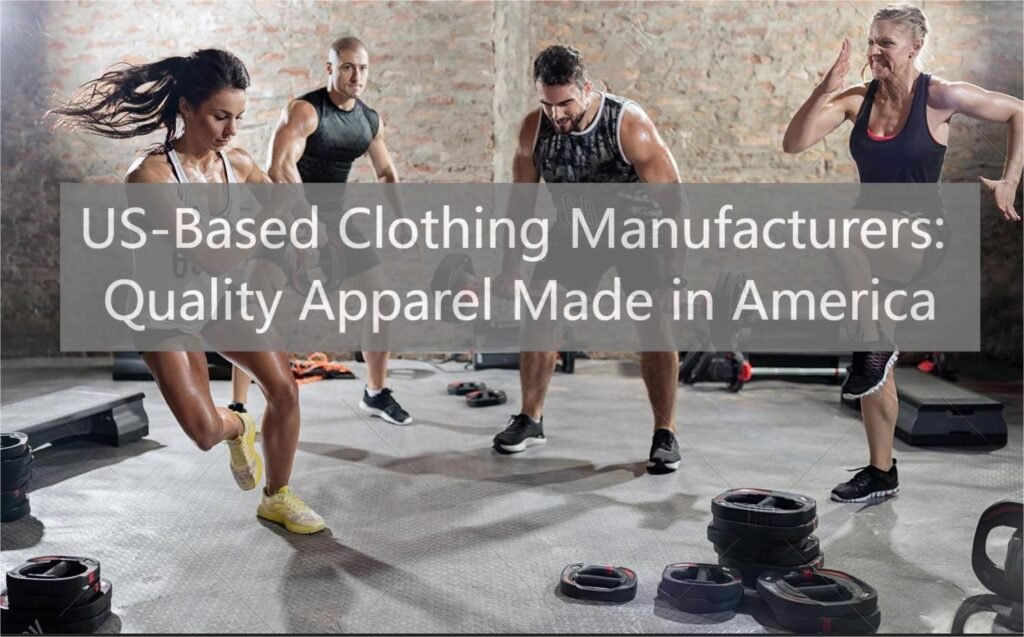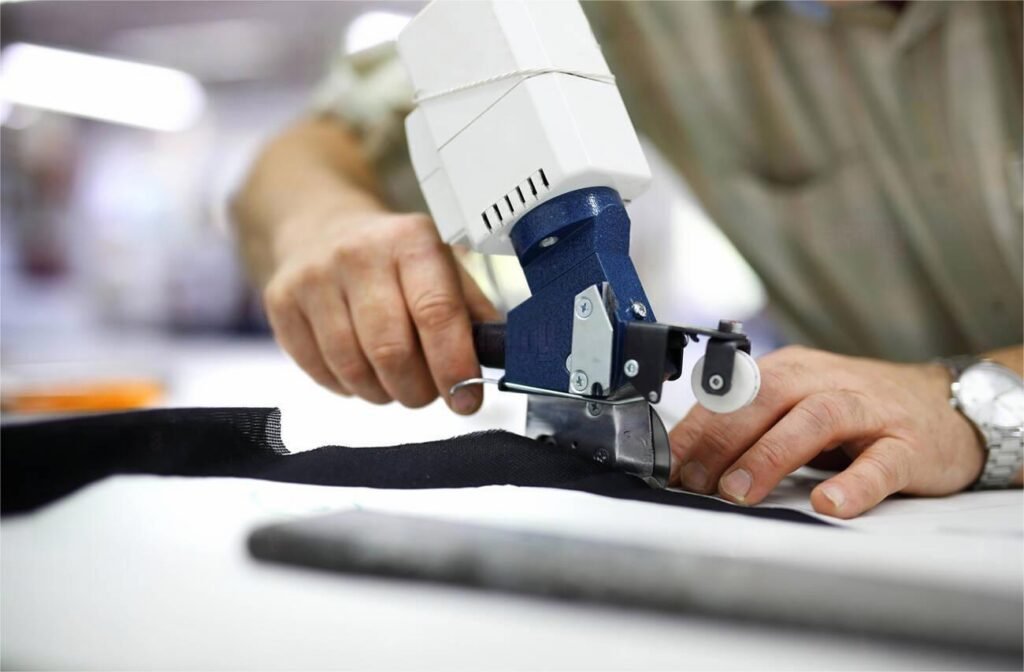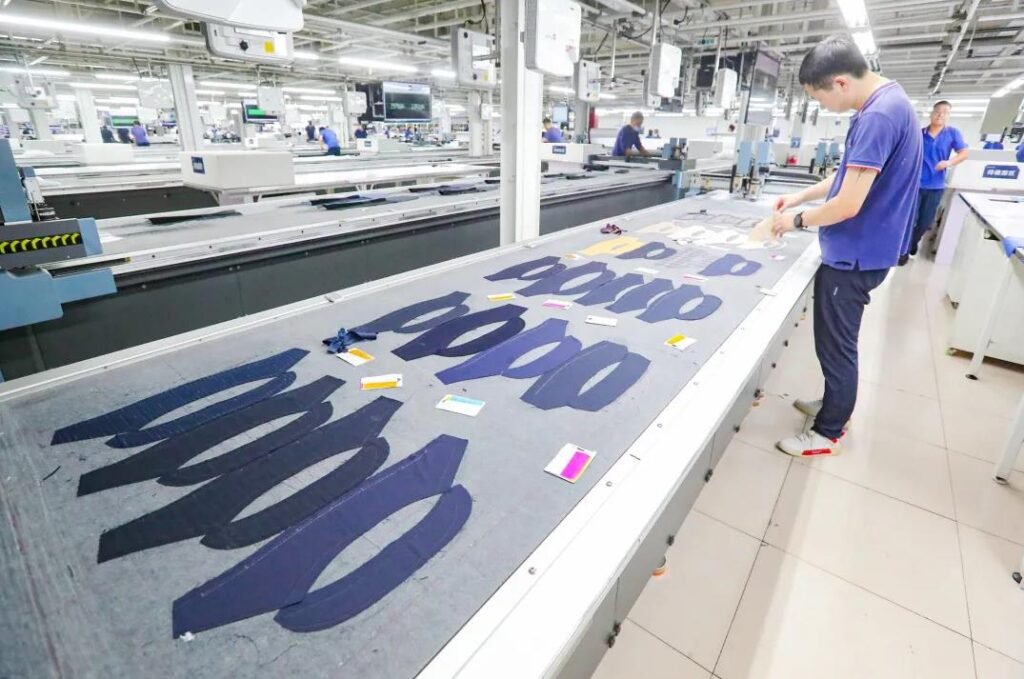No products in the cart.
Custom Yoga Pants
US-Based Clothing Manufacturers: Quality Apparel Made in America
Introduction: The Resurgence of US-Based Clothing Manufacturers
In recent years, there has been a noticeable resurgence in the popularity and demand for clothing made in the United States. Consumers are increasingly seeking out US-based clothing manufacturers for their quality apparel, ethical production practices, and support of local economies. This shift in consumer preferences has led to a renewed focus on American-made clothing and a reinvigoration of the US apparel industry.

The Advantages of Choosing US-Made Clothing
There are numerous advantages to choosing clothing made in the USA. One of the primary benefits is the assurance of high-quality craftsmanship. US-based clothing manufacturers are known for their attention to detail, superior materials, and skilled workforce. By purchasing clothing made in America, consumers can be confident in the durability and longevity of their garments.
Another advantage of US-made clothing is the adherence to strict labor and environmental standards. American manufacturers are subject to rigorous regulations that protect workers’ rights and ensure safe working conditions. Additionally, US-based clothing manufacturers are more likely to prioritize sustainable and eco-friendly production practices, reducing their carbon footprint and promoting a healthier planet.
A Brief History of US-Based Clothing Manufacturing
The history of clothing manufacturing in the United States dates back to the early days of the country. In the 19th and early 20th centuries, the US was a global leader in textile and garment production. Cities like New York and Boston were bustling hubs of manufacturing, with factories employing thousands of workers.
However, the rise of globalization and the outsourcing of production to low-cost countries led to a decline in US-based clothing manufacturing. Many American companies moved their operations overseas to take advantage of cheaper labor and production costs. This shift resulted in the loss of millions of manufacturing jobs and a significant blow to the US apparel industry.
The Impact of Offshoring on the US Apparel Industry
The offshoring of clothing production had a profound impact on the US apparel industry. While it initially promised cost savings for companies, it ultimately led to a loss of jobs and a decline in the quality of garments. Offshore factories often operate under lax labor and environmental regulations, leading to exploitation of workers and negative environmental consequences.
Furthermore, the distance between production facilities and consumers resulted in longer lead times and increased transportation costs. This led to a disconnect between manufacturers and consumers, making it difficult for companies to respond quickly to changing fashion trends and customer demands.
The Rise of Ethical and Sustainable Fashion in the US
In recent years, there has been a growing awareness and demand for ethical and sustainable fashion in the United States. Consumers are increasingly concerned about the social and environmental impact of their clothing choices and are seeking out brands that align with their values.
US-based clothing manufacturers have been at the forefront of this movement, embracing ethical and sustainable practices. Many American brands prioritize fair wages, safe working conditions, and transparency in their supply chains. They also strive to minimize their environmental footprint by using eco-friendly materials, reducing waste, and implementing recycling programs.

Prominent US-Based Clothing Manufacturers: A Closer Look
Several prominent US-based clothing manufacturers have emerged as leaders in the industry, offering high-quality apparel made in America. One such brand is American Giant, known for its durable and stylish basics. American Giant prides itself on sourcing materials domestically and manufacturing its garments in the US, supporting local communities and ensuring top-notch quality.
Another notable brand is All American Clothing Co., which specializes in denim and workwear. All American Clothing Co. is committed to producing its garments entirely in the US, from the cotton fields to the finished product. By doing so, the brand supports American farmers, workers, and communities.
How US-Made Clothing Supports Local Economies
Choosing US-made clothing has a significant impact on local economies. When consumers purchase clothing made in America, they are supporting domestic manufacturers, workers, and communities. This support translates into job creation, increased wages, and economic growth.
According to the American Apparel & Footwear Association, the US apparel manufacturing industry directly employs over 120,000 workers. Additionally, for every job created in the apparel manufacturing sector, two additional jobs are created in other industries, such as retail and transportation. By supporting US-based clothing manufacturers, consumers contribute to the overall economic well-being of their communities.
The Role of Technology in US-Based Clothing Manufacturing
Technology has played a crucial role in the resurgence of US-based clothing manufacturing. Advancements in automation, robotics, and digital design have revolutionized the industry, making it more efficient and cost-effective to produce clothing in America.
Automation has allowed manufacturers to streamline their production processes, reducing labor costs and increasing productivity. Robotics and artificial intelligence have also improved the precision and speed of garment manufacturing, resulting in higher-quality products.
Digital design tools have enabled clothing manufacturers to create and prototype garments more quickly and accurately. This has allowed for faster turnaround times and the ability to respond swiftly to changing fashion trends and customer demands.
Challenges Faced by US-Based Clothing Manufacturers
Despite the resurgence of US-based clothing manufacturing, there are still significant challenges that manufacturers face. One of the main obstacles is the competition from low-cost countries. While American-made clothing offers superior quality and ethical production practices, it often comes at a higher price point compared to garments produced overseas.
Additionally, the lack of skilled labor in the US apparel industry poses a challenge. Many experienced garment workers have retired or moved on to other industries, leaving a shortage of skilled workers. This shortage can hinder the growth and expansion of US-based clothing manufacturers.

The Future of US-Made Clothing: Trends and Opportunities
The future of US-made clothing looks promising, with several trends and opportunities on the horizon. One of the key trends is the growing demand for customization and personalized clothing. US-based manufacturers are well-positioned to capitalize on this trend, as they can offer made-to-order garments and customization options that overseas factories may struggle to provide.
Another opportunity lies in the rise of direct-to-consumer brands. By cutting out the middleman and selling directly to consumers, US-based clothing manufacturers can offer competitive prices while maintaining control over their production processes and supply chains.
Furthermore, the increasing focus on sustainability and ethical production practices presents an opportunity for US-based clothing manufacturers to differentiate themselves in the market. By highlighting their commitment to fair labor practices, eco-friendly materials, and transparency, American brands can attract conscious consumers who prioritize these values.
Supporting US-Based Clothing Manufacturers: Tips for Consumers
As consumers, there are several ways we can support US-based clothing manufacturers. Firstly, we can prioritize purchasing clothing made in America. By consciously choosing American-made garments, we can contribute to the growth and success of domestic manufacturers.
Secondly, we can educate ourselves about the brands we support. Researching a brand’s manufacturing practices, supply chain transparency, and commitment to ethical and sustainable production can help us make informed purchasing decisions.
Lastly, we can advocate for policies that support US-based clothing manufacturing. By voicing our support for fair trade agreements, domestic manufacturing incentives, and stricter labor and environmental regulations, we can create a favorable environment for American brands to thrive.
Conclusion: Embracing Quality Apparel Made in America
The resurgence of US-based clothing manufacturers is a testament to the growing demand for quality apparel, ethical production practices, and support of local economies. By choosing clothing made in America, consumers can enjoy the benefits of superior craftsmanship, adherence to strict labor and environmental standards, and the satisfaction of supporting domestic manufacturers.
US-based clothing manufacturers have overcome challenges and embraced technology to remain competitive in the global market. With trends such as customization, direct-to-consumer brands, and sustainability on the rise, the future looks promising for American-made clothing.
As consumers, we have the power to support US-based clothing manufacturers by making conscious purchasing decisions, educating ourselves about brands’ practices, and advocating for policies that promote domestic manufacturing. By doing so, we can contribute to the growth and success of the US apparel industry and embrace quality apparel made in America.
